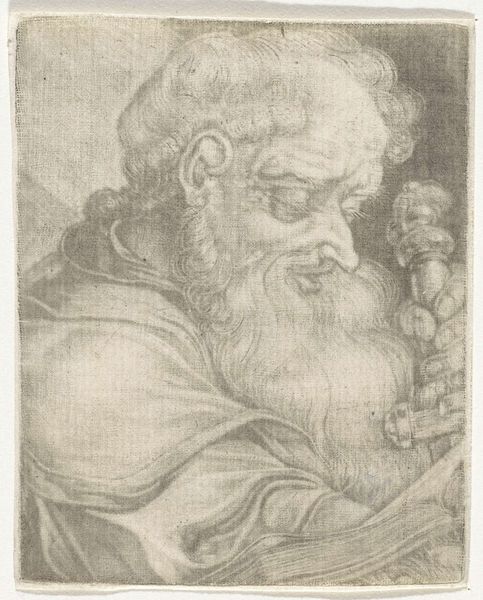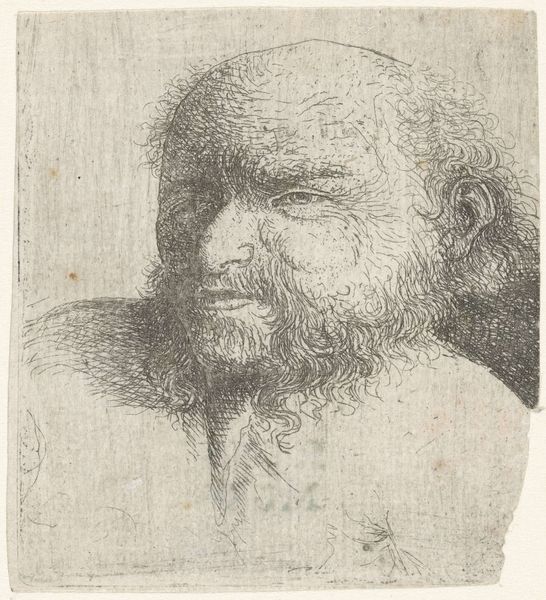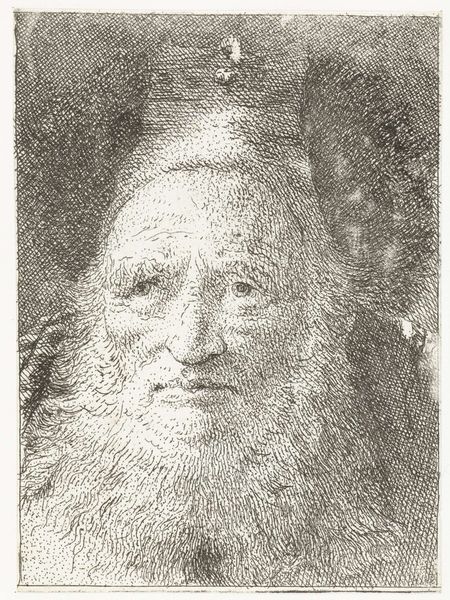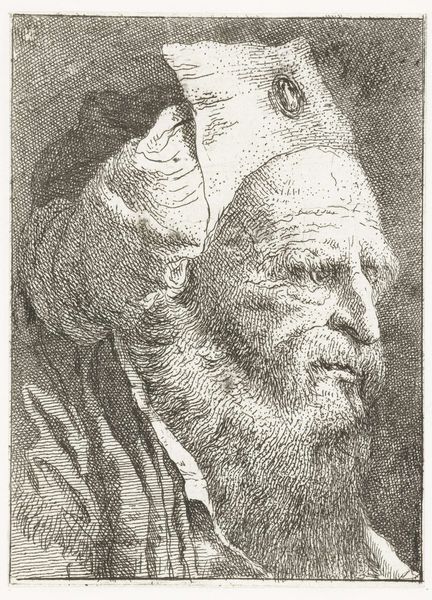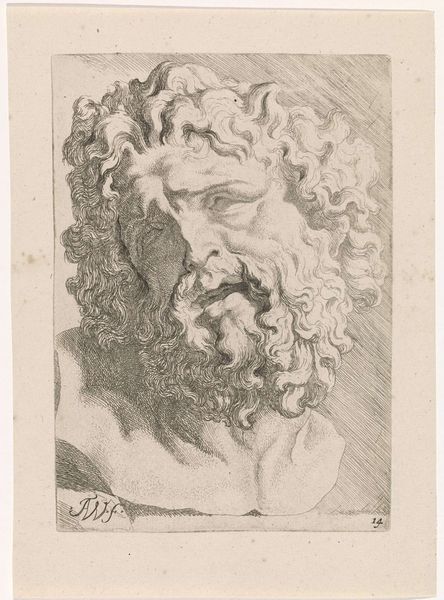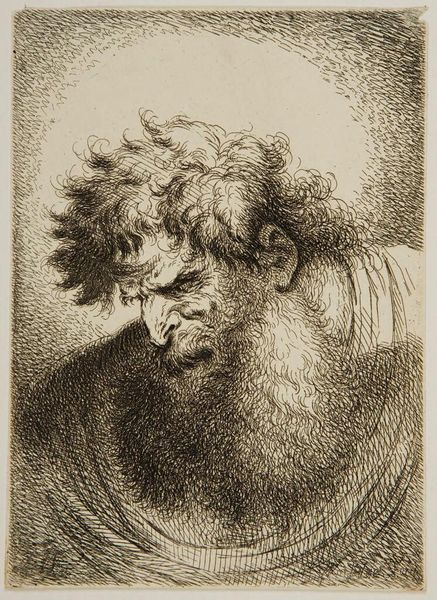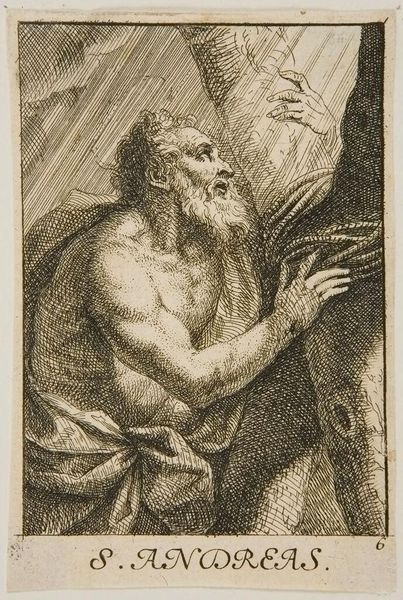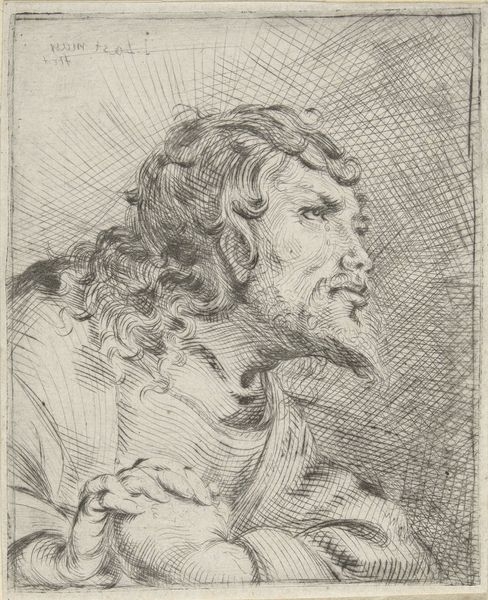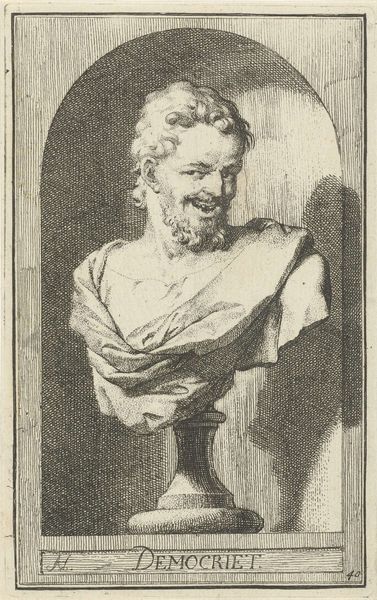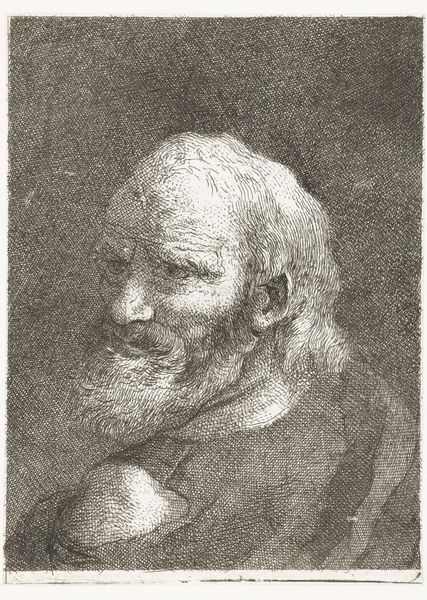
drawing, graphite
#
portrait
#
pencil drawn
#
drawing
#
neoclacissism
#
pencil sketch
#
pencil drawing
#
graphite
#
portrait drawing
#
genre-painting
Dimensions: height 121 mm, width 89 mm
Copyright: Rijks Museum: Open Domain
Editor: This graphite drawing, "Man kijkt naar beneden" from around 1771 to 1774 by Giovanni Domenico Tiepolo, strikes me as quite melancholic. The figure's gaze is directed downward, and there's a sense of introspection, even burden. How do you interpret this work, considering its historical context? Curator: That feeling of melancholy is understandable, and I'd argue, key to understanding the work's deeper resonance. Tiepolo was working during a period of great social and political upheaval. This portrait, rendered with such intimate detail, feels less like a celebration of power, which was common, and more like a commentary on the weight of societal expectations and the burden of existence itself. Notice the lines etched deep into his face - what story do you think they tell? Editor: They suggest experience, hardship, perhaps even disappointment. I'm wondering about the role of Neoclassicism in this piece. Does it subvert it in any way? Curator: Absolutely, the neoclassical style, with its emphasis on reason and order, often idealized its subjects. But here, we see something quite different. Tiepolo uses the medium of drawing, with all its imperfections and nuances, to reveal a very human vulnerability. It's a challenge to the polished facade that neoclassicism often presented, prompting us to question who is included and excluded from those ideals and at what cost. Think of the French Revolution which happened a little later – a stark reminder that the neat categories that some sought to enforce always fracture and produce marginalized subjects like the man depicted here. What do you think? Editor: That’s insightful. Seeing it as a counter-narrative to the dominant aesthetic really shifts my understanding of the artwork. Curator: It’s a reminder that art doesn’t exist in a vacuum, and understanding the social forces at play helps us see it with fresh eyes. Editor: Definitely, I am very happy to discuss and review the art through the social forces and historical backgrounds. It made this artwork a lot more profound for me.
Comments
No comments
Be the first to comment and join the conversation on the ultimate creative platform.


